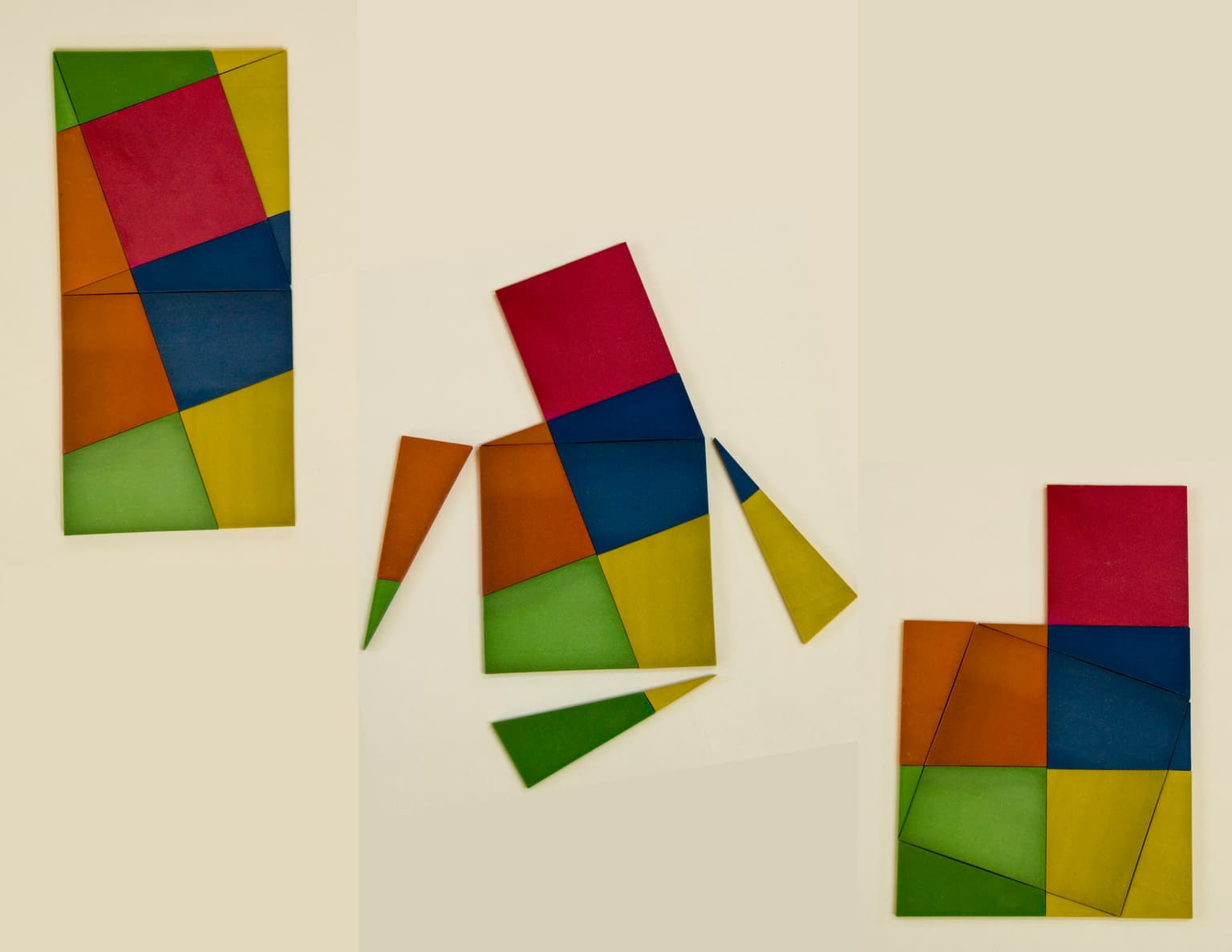2013 Joint Mathematics Meetings
Marc Chamberland
Artists
Marc Chamberland
Myra Steele Professor of Mathematics
Grinnell College
Grinnell, Iowa, USA
Statement
I have long been enchanted by the aesthetic side of mathematics. Most people view mathematics as a collection of tools and procedures and get mired in the mechanics. Mathematical art communicates the essential beauty found in mathematical truths. As G. H. Hardy, wrote, "The mathematician's patterns, like the painter's or the poet's must be beautiful; the ideas, like the colors or the words must fit together in a harmonious way. Beauty is the first test: there is no permanent place in this world for ugly mathematics."
Artworks

Inner Square
0.9 x 22.0 x 44.0 each in cm
High Performance Composite made with a 3D printer
2012
Inner Square illustrates a beautiful geometrical property.
Starting with a square whose side length is one, make four similar slices through each
corner to the opposite edge, one third of a unit from the adjacent corner.
What is the area of the (red) inner square?
While algebra could be used to calculate points and lines to solve
this problem, a simple geometric argument yields a solution
which a child can understand.
The answer can be seen by making two copies of the original
square, dissecting them into smaller colored pieces, then
recombined the pieces into five identically sized smaller squares (including the
red square). This tells us that the inner square has area 2/5.
The model invites visitors to move the pieces and experience the
transformation. The geometric thought and tactile motion combine to produce
a puzzle-like experience which embraces both mathematics and art.